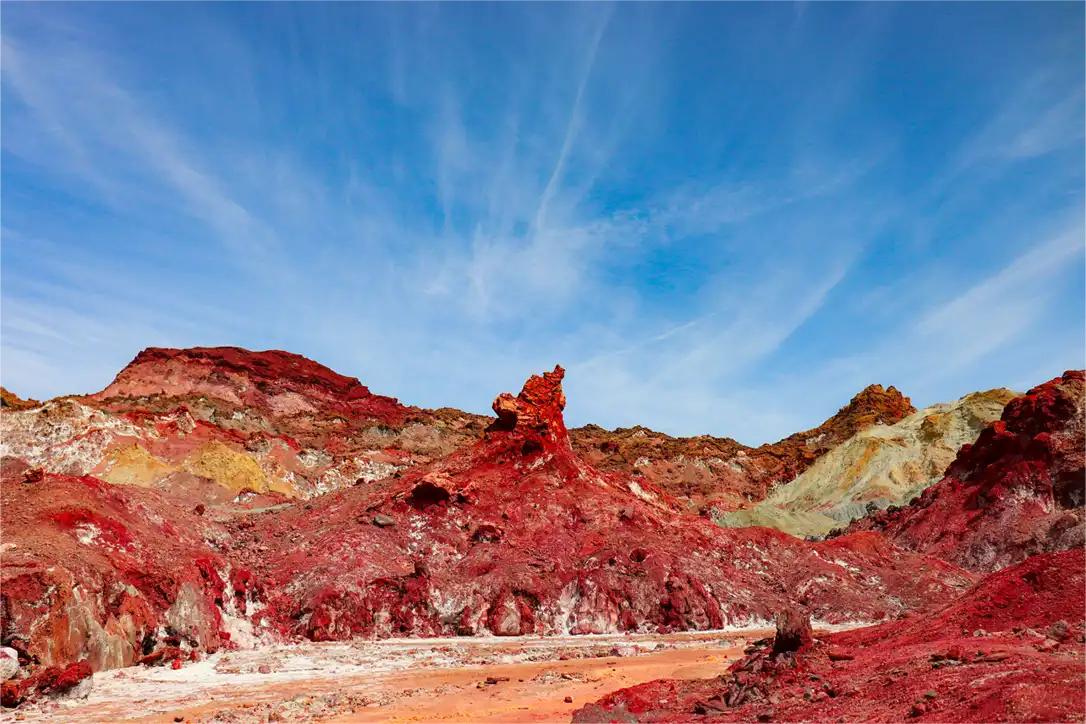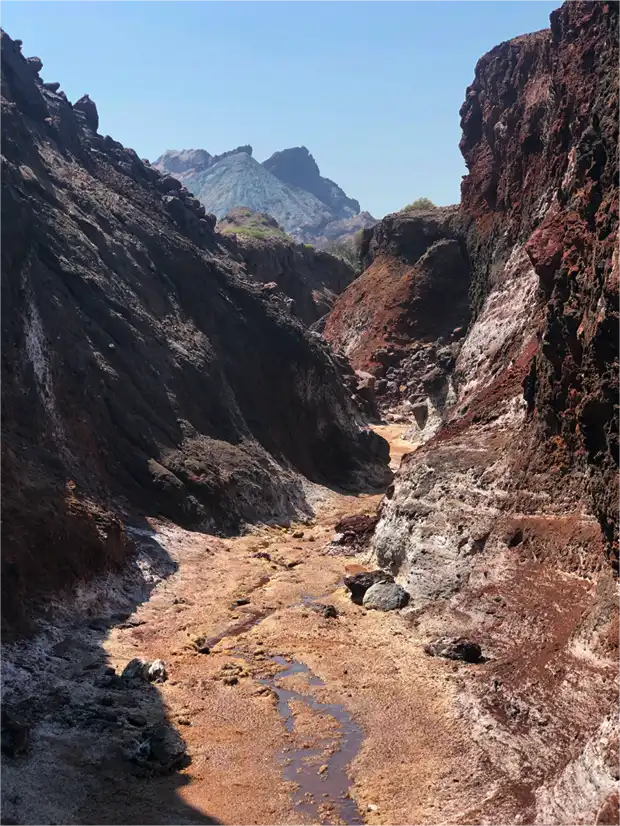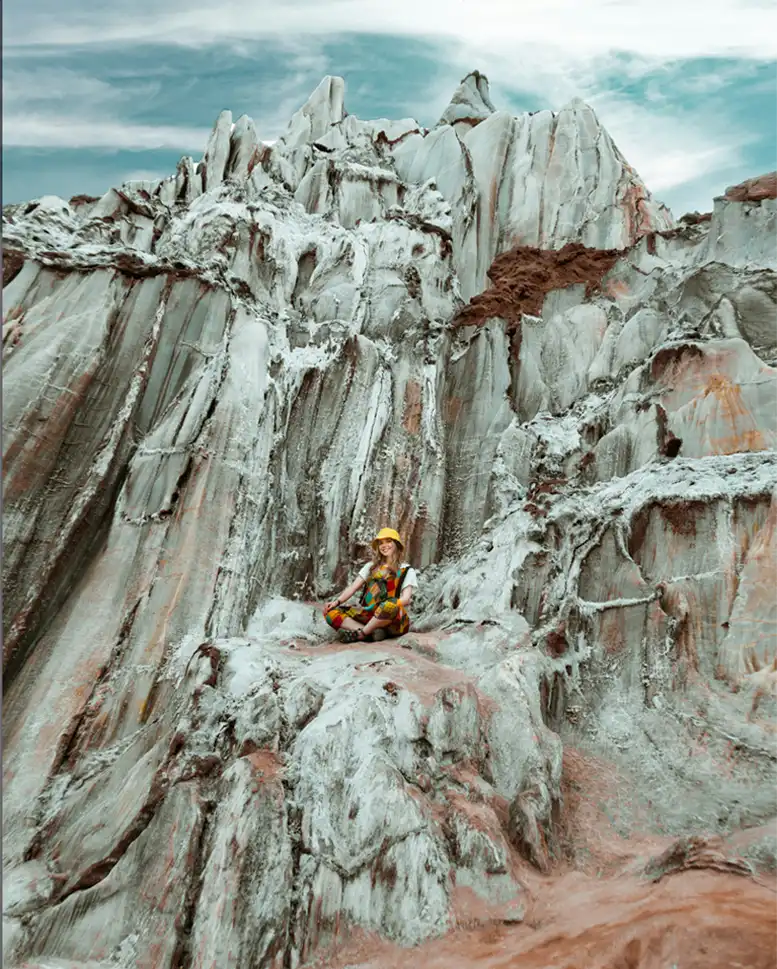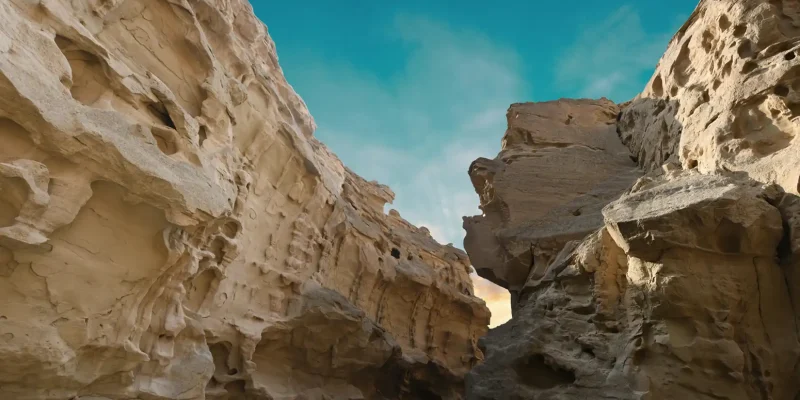
In the blue waters of the Persian Gulf lies Hormuz Island, a fascinating place that draws visitors with its out-of-this-world scenery and deep history. This tiny Iranian island, which belongs to Hormozgan Province, stands out for its eye-catching red soil that colors the beaches and cliffs in bright shades. Hormuz Island’s one-of-a-kind rock formations and key spot on the map have played a big role in shaping its importance over the years making it a top pick for folks who want to uncover Iran’s hidden gems.
People visiting Hormuz Island can expect a wide range of things to do, from seeing the island’s natural beauty to exploring its cultural history. This article will show readers the best places to visit, like the well-known red beach and the old fortress built by the Portuguese.
It will also tell about how locals live and give useful travel advice to help make the trip smooth and memorable. If you love adventure, history, or nature, Hormuz Island offers an amazing getaway in the middle of the Persian Gulf.
Discovering Hormuz Island

Location and Geography
Hormuz Island is a stunning jewel in the Persian Gulf, about 8 km from the Iranian coast. This tiny island, with an area of 42 km2, belongs to Hormozgan Province and sits in the key Strait of Hormuz. The Strait, a slim channel 30 miles wide at its thinnest point, links the Persian Gulf to the Gulf of Oman. The island’s spot makes it one of eight main islands in the Strait, with Iran controlling seven of them.
Historical Significance
Hormuz Island, which ancient Greeks called Organa and Islamic people named Jarun, boasts a long history that spans thousands of years. People first set foot on the island more than 40,000 years ago, as shown by Middle Paleolithic tools found at the Chand-Derakht site.

By 1200, Hormuz had grown into a key trading hub with India and China. Around 1300, an Arab ruler of Hormuz set up New Hormuz on the island, which soon became the Persian Gulf’s main trading center. The island’s key location caught the eye of the Portuguese, who took it over in 1507 and built a fort there. In 1622, English and Persian forces teamed up to take back the island.
Special Rock Formations
Hormuz Island’s geology stands out making it a natural marvel. The island forms a salt dome created when rock salt and other evaporites push up through rock layers above. This process has an impact on the island’s structure resulting in a noticeable concentric ring pattern you can see from space.
The island’s standout feature is its bright red soil full of iron oxide minerals such as hematite. This red color stands in stark contrast to the Gulf’s blue waters creating a sight that draws people from all over. The island also has salt caves, mountains, and streams stained with ocher adding to its varied landscape. These one-of-a-kind elements have made Hormuz Island a hot spot for geologists, artists, and sightseers alike.
Top Attractions on Hormuz Island
Red Beach
People often call Hormuz Island the Rainbow Island of Iran. Its red beach stands out as a major draw. This coastal area, which goes by the name Geopark, grabs attention with its bright red, orange, and yellow colors. These shades pop against the blue-green waters of the Persian Gulf. The beach gets its unusual color from iron oxide minerals. These minerals make up about 70% of the red soil on the island.
Believe it or not, the red soil of Hormuz, which locals call “Gelack,” looks amazing and you can eat it too. People there add this soil to their food as a spice in all sorts of dishes, like fish, bread, pickles, jams, and sauces. They make a well-known local dish named Suragh using these special spices, which gives you a one-of-a-kind tasty food experience.

Portuguese Castle
The Portuguese Castle also called the Fort of Our Lady of the Conception or Ghale-ye Porteghaliha, showcases the island’s deep historical roots. Alfonso de Albequrque ordered its construction in 1507 AD. This strong fortress sits in the northern section of the island.
The castle’s design is striking, with its odd-shaped many-sided build. Its walls stand 3.5 meters thick, and its towers reach 12 meters high. The fortress sits on a rocky outcrop built from reddish stones. A moat once cut it off from the rest of the island. You can still spot traces of this moat today. The castle has many parts. These include a place to store weapons, a water tank living quarters, a jail, a church, a command post, and a main hall.
Valley of Statues
The Valley of Statues also called the Valley of Sculptures or Valley of Imagination, is a beautiful natural site on Hormuz Island. You’ll find it 40 meters above the beach. This special place has tall rocks that wind and water have shaped into weird forms over thousands of years.
When you visit the valley, you’ll see rocks that look like different animals and make-believe creatures such as dragons, birds, and sheep. The site gives you great views of the coast and has crystal-like sands creating an amazing scene. People know the Valley of Statues for its calm feeling and the nice quiet that surrounds it. This makes it a fascinating place for those who choose to walk its winding paths.
Cultural Experiences
Local Bandari People
The Bandari ethnic group lives on Hormuz Island. “Bandari” means “people of the port”. Bandari women wear colorful traditional clothes. These include a special face mask called a boregheh. Women have worn this mask for hundreds of years. It has religious meaning and shields the skin from strong sunlight. Different groups make up the island’s population. These include Persians, Arabs, and native Hormuzis. Each group adds to the island’s rich culture.
Traditional Cuisine
The food on Hormuz Island shows its seaside setting and cultural roots. Fish, shrimp, and lobster form the main part of many local meals. You should try Sooragh, a deep red sauce that people make from gelak, the island’s edible red soil. Locals use gelak as a spice, but they never eat it as a powder. Another favorite dish is tomshi, a thin pancake that often goes with Sooragh. These special food traditions give visitors a chance to taste Hormuz’s unique flavors and cultural heritage.
Art and Crafts
Hormuz Island takes pride in its handicraft traditions, which reflect its cultural roots. Soozi weaving, a local craft, creates vibrant fabrics for clothes and ornamental objects. The island also specializes in salt crystal crafts, pottery, and hand-painted tiles. You’ll spot the island’s artistic spirit in murals and artwork all over the place, including the museum and gallery of environmental artist Dr. Ahmad Nadaian. These various art forms help to keep the island’s craft legacy alive and give visitors one-of-a-kind mementos that capture Hormuz’s essence.
Practical Travel Tips
Best Time to Visit
You’ll want to visit Hormuz Island between early fall and late spring when the weather stays mild. Winter brings nice daytime temps of 23-28°C. Summer can get hot, with temps going over 45°C, but you’ll see fewer tourists and pay less.
Transportation Options
Travelers can get to Hormuz Island by taking a ferry from Bandar Abbas or Qeshm. Ferries leave Bandar Abbas often during the day, and the trip lasts about 40 minutes. The trip costs around $2-3 USD. Another option is to fly to Bandar Abbas International Airport and then catch a quick flight to Hormuz Airport.
Accommodation Choices
Travelers can find various places to stay on Hormuz Island such as guesthouses, hostels, and campsites. Many local families let out rooms that cost about $7-10 each night. Saboora Hostel provides shared rooms at 300,000 IRR per person. Most beach areas allow camping, which many visitors enjoy. The Red Beach Hotel takes online bookings and charges $14 per night, which suits those who like to plan ahead.
Conclusion
Hormuz Island catches the eye as a fascinating place that mixes natural beauty with a deep past. Its eye-catching red beaches, one-of-a-kind land shapes, and cultural roots give visitors something they can’t find anywhere else. The island’s key spot in the Strait of Hormuz has played a big role in its importance over time leaving behind interesting old structures like the Portuguese Castle. The local Bandari folks, with their lively customs and food, make the island even more appealing.
For folks planning a trip, Hormuz Island has a lot to offer. You can check out the Valley of Statues or try local foods like Sooragh. There’s plenty to do, no matter what you’re into. It’s easy to get to the island, with ferries running often from Bandar Abbas. This makes it simple to add to your Iran travel plans. You might come for the cool rock formations, the historic spots, or just to chill on the colorful beaches. Whatever brings you, Hormuz Island will give you a trip to remember in the middle of the Persian Gulf.
FAQs
The best time to visit Hormuz Island is between November and March when the weather is cooler and more comfortable for outdoor exploration. Summers can be extremely hot and humid.
Hormuz Island is famous for its Rainbow Valley with colorful mountains, the Red Beach, the Portuguese Castle, and the Salt Cave. Visitors also enjoy walking along its unique coastline and exploring the island’s rich natural beauty.
To get to Hormuz Island, you can take a ferry from Bandar Abbas. The ferry ride typically takes about 30-40 minutes. The ferries run regularly throughout the day.
Don’t miss trying the local seafood dishes, such as grilled fish, shrimp, and “ghalieh mahi” (a tangy fish stew). Also, try “souzi polo,” a rice dish with herbs unique to the region.
Yes, Hormuz Island is an excellent destination for eco-tourism. It boasts stunning landscapes, rare wildlife, and geological wonders, including the colorful soil and unique rock formations. Visitors are encouraged to respect the natural environment and avoid taking soil or disturbing wildlife.

